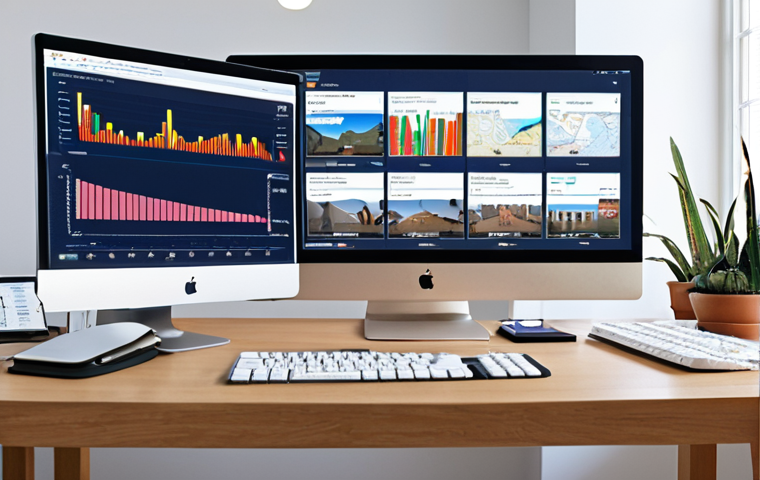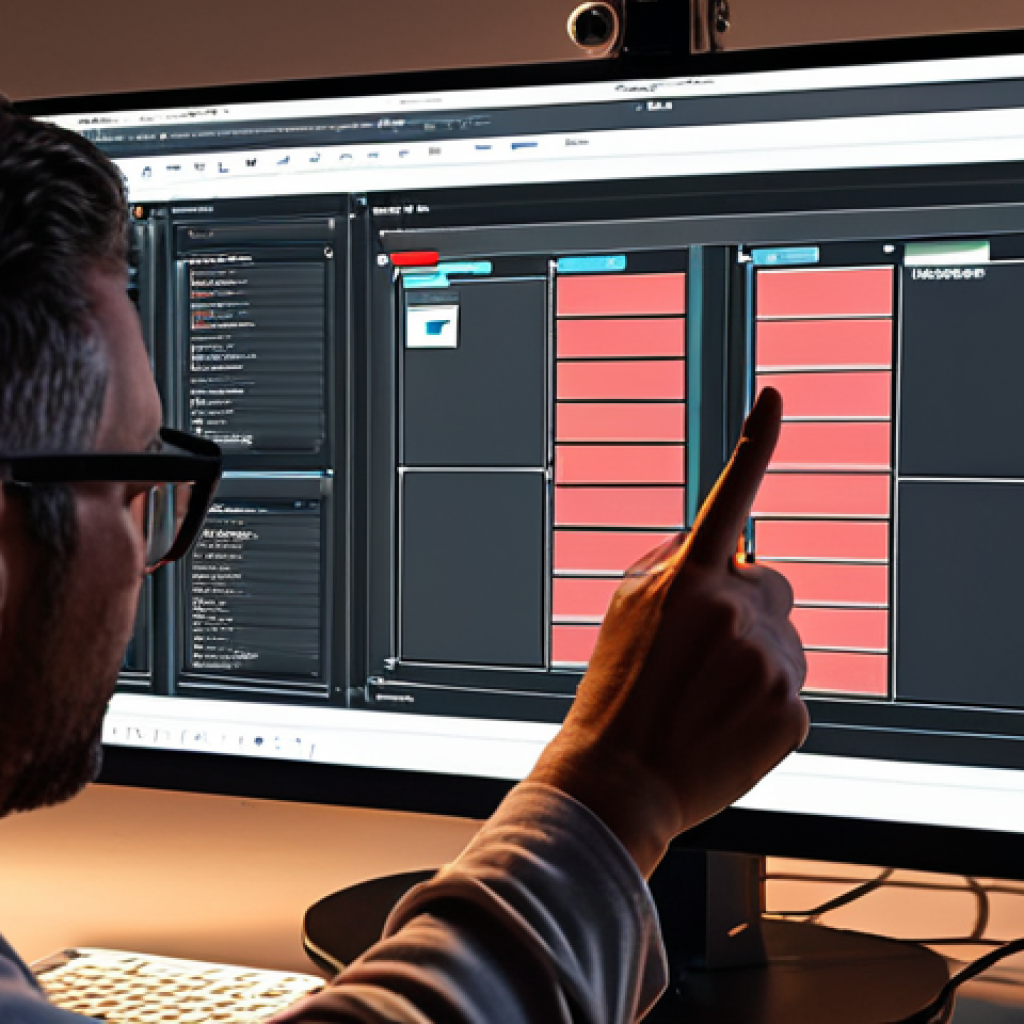Stepping into an animation studio, you quickly realize it’s a whirlwind of boundless creativity, tight deadlines, and often, a beautifully chaotic symphony of ideas.
From my own years navigating the high-stakes world of animation production, I’ve seen firsthand how an incredible concept or a perfectly drawn character can falter, not because of a lack of artistic talent, but simply due to a missed cue or a misread expression within the team.
In today’s hyper-connected, global animation landscape, where projects demand lightning-fast turnarounds for a multitude of streaming platforms and teams are increasingly distributed across continents, exceptional communication isn’t just a desired trait; it’s the absolute cornerstone of project success.
The recent surge in AI-powered tools, while revolutionizing pre-production and asset creation, simultaneously underscores the critical need for crystal-clear human dialogue to interpret complex data, manage evolving creative visions, and ensure everyone remains perfectly aligned.
It’s a recurring challenge I’ve grappled with, understanding that every frame and every emotional beat hinges on seamless information flow. Let’s dive deeper into this below.
Embracing Transparent Feedback Loops for Creative Synergy

Stepping into the maelstrom of an animation studio, I’ve witnessed countless times how a simple “looks good” can mask deeper issues, or how a vague note like “make it punchier” can send an artist down a rabbit hole of endless revisions. This isn’t just about politeness; it’s about the very core of collaboration. In an environment where every frame, every gesture, and every line of dialogue is meticulously crafted, the quality of feedback directly correlates with the quality of the final output. I remember one particularly stressful pre-production phase where a crucial character design kept getting subtle, conflicting notes from different departments. The issue wasn’t the art itself, but the lack of a clear, unified feedback channel. It left the artist feeling adrift, morale dipping as they tried to hit a moving target. That’s when it truly hit me: establishing a framework for constructive, transparent feedback isn’t just good practice, it’s absolutely essential for creative sanity and project success. It builds trust, fosters a sense of shared ownership, and ensures everyone is pulling in the same direction, even when opinions differ wildly.
1. Establishing a ‘No-Blame’ Feedback Culture
The first hurdle in any creative endeavor is often the fear of failure or criticism. In animation, where artists pour their hearts into their work, direct feedback can sometimes feel personal. From my years in the trenches, I’ve learned that cultivating a “no-blame” culture is paramount. This means shifting the focus from individual shortcomings to collective problem-solving. When reviewing dailies or animatics, the conversation needs to center around the project’s needs and goals, rather than an artist’s perceived mistakes. I’ve found that starting with what’s working well, then gently guiding the conversation to areas that need refinement, creates a much more receptive environment. It’s about building a safe space where team members feel comfortable being vulnerable with their work, knowing that the critique comes from a place of shared ambition, not judgment. This approach encourages open dialogue, allowing issues to surface early and be addressed proactively, before they snowball into major production headaches. It’s a subtle but powerful shift in mindset that pays dividends in team cohesion and overall project efficiency.
2. Structured Critiques: From Dailies to Deliverables
Chaos thrives in unstructured environments, and creative feedback can quickly descend into chaos without a clear process. My experience has taught me that implementing a structured approach to critiques, from informal daily check-ins (“dailies”) to formal client reviews, is absolutely non-negotiable. This involves clear agendas for meetings, designated note-takers, and a system for tracking feedback implementation. For instance, in dailies, we’d often use visual annotation tools directly on the frames, pinpointing exactly what needed adjustment and why. This specificity reduces ambiguity and saves countless hours of rework. For larger reviews, having a standardized template for written notes ensures that all key stakeholders provide feedback in a consistent, actionable format. This isn’t about stifling creativity with bureaucracy; it’s about channeling it effectively. When artists know exactly where to find their notes, who they’re from, and what the desired outcome is, they can focus on the creative solution rather than deciphering vague directives. This disciplined approach streamlines the revision process, ensuring that every iteration moves the project closer to its final vision.
Mastering Asynchronous Communication in Global Pipelines
Working across time zones, I quickly learned that real-time syncs are a luxury, not a given. The animation industry is inherently global now, with artists, animators, and producers collaborating from Los Angeles to London, Seoul to São Paulo. This beautiful melting pot of talent brings incredible diversity and perspective, but it also presents a monumental communication challenge. I recall a particularly complex sequence where the lead animator was in Vancouver, the background artist in Budapest, and the director in Tokyo. Imagine trying to coordinate a simple revision on a tight deadline! Traditional methods just don’t cut it. My journey through various international co-productions has taught me that the ability to communicate effectively without being in the same room, or even the same workday, is a cornerstone of modern animation success. It’s about designing communication systems that are robust enough to carry complex creative intent across continents and time differences, ensuring that every team member, no matter where they are, feels connected, informed, and empowered to contribute.
1. Crafting Crystal-Clear Briefs and Updates
In a world of distributed teams, your written word becomes your most powerful tool. I’ve seen projects go off the rails simply because an initial brief was ambiguous or a daily update lacked crucial context. My personal rule of thumb is: if it can be misunderstood, it will be. This is especially true when cultural nuances in language come into play. Therefore, dedicating time to crafting crystal-clear briefs, detailed asset requests, and comprehensive status updates is not a luxury; it’s a necessity. This means using precise language, avoiding jargon where possible, and always providing visual references when discussing creative elements. For instance, instead of saying “make the character more expressive,” I’d write, “Enhance the character’s facial animation to convey a stronger sense of surprise, specifically focusing on widening the eyes and raising the eyebrows in frame 120-135, similar to Reference A.” The effort spent upfront in meticulous documentation saves exponentially more time later in revisions and corrections. It’s about front-loading clarity to prevent backend confusion, giving everyone a rock-solid foundation to work from, regardless of when they read it.
2. Leveraging Project Management Platforms Effectively
If asynchronous communication is the language, then robust project management platforms are the grammar. In my experience, tools like Jira, Asana, Ftrack, or ShotGrid aren’t just for task tracking; they are the central nervous system of a distributed animation pipeline. They provide a single source of truth for all project-related information—from individual task assignments and deadlines to asset versioning and review notes. My initial resistance to “more software” quickly dissolved once I saw how effectively these platforms could streamline workflows. The key is consistent adoption across the entire team. Everyone needs to know how to log their hours, update task statuses, attach work-in-progress files, and leave precise feedback tied directly to the relevant assets. When used to their full potential, these platforms dramatically reduce the need for endless email chains or desperate pings across time zones. They empower team members to find the information they need independently, reducing bottlenecks and fostering a sense of autonomy while maintaining complete oversight. It’s about creating a transparent, self-sufficient workflow where communication happens contextually and persistently, not just in fleeting conversations.
The Critical Role of Visual Communication Beyond Storyboards
There’s a saying in animation: if you can’t draw it, you can’t animate it. But the communication extends far beyond just initial storyboards. I’ve encountered countless situations where a beautifully animated sequence just didn’t “feel right,” not because of the technical execution, but because the emotional intent or the subtle visual cues weren’t properly conveyed or understood early on. We often rely on verbal descriptions, but in a visual medium, sometimes words just aren’t enough. I remember a particularly intense production where a key character’s emotional arc wasn’t landing with the audience. After weeks of trying to fix it with dialogue tweaks, we realized the core issue was a fundamental misunderstanding of the character’s internal state in a few critical scenes, which could have been avoided with stronger visual communication from the get-go. It highlighted for me that the unspoken language of visuals – reference images, mood boards, color scripts, even simply annotated screenshots – is just as, if not more, critical than written or verbal instructions in conveying the nuance and vision of a project. It’s about building a shared visual language that leaves no room for misinterpretation.
1. Annotating for Clarity: Beyond Just Red Lines
Anyone who’s been in an animation review knows the dreaded “red line” – a simple mark on a frame indicating something needs to be changed. But a red line without context is almost useless. My experience has taught me that effective visual communication goes far beyond just pointing out flaws. It’s about precise, descriptive annotation. Instead of a vague circle on a character’s hand, a note like “Adjust finger pose to convey more tension – reference image A” provides actionable guidance. Using tools that allow for multi-layered annotations, where different departments can add their specific notes (e.g., animation, lighting, effects), creates a comprehensive visual dialogue. I’ve seen how this level of detail dramatically reduces iteration cycles. It’s like having a conversation directly on the art itself, ensuring that every correction is understood in its full visual context. This method turns static images into dynamic communication tools, helping to bridge the gap between abstract ideas and concrete artistic execution.
2. Building Shared Visual Glossaries
Just as a production has a script, it often needs a visual glossary. This concept might sound overly academic, but in practice, it’s incredibly powerful. I’ve found it invaluable to establish a shared library of visual references – character turnarounds, prop sheets, environment concepts, and even mood board compilations that define the project’s aesthetic and emotional tone. This isn’t just about having assets; it’s about having a common visual language. For instance, if a director says “I want this scene to feel ‘gritty’ like early 90s action films,” having a shared reference folder of examples from that era ensures everyone interprets “gritty” similarly. This avoids subjective interpretations and ensures consistency across different artists and departments. My own experience has shown that when everyone is looking at the same definitive visual library, discussions become more focused, and creative deviations are minimized, not because creativity is stifled, but because it’s channeled within a defined universe. This collective visual understanding helps maintain stylistic integrity and ensures that the final product feels cohesive and intentional.
Cultivating Emotional Intelligence for Smoother Team Dynamics
It’s easy to get caught up in the technicalities of animation production – the software, the pipelines, the deadlines. But I’ve found that ignoring the human element, the very real emotions and personalities of the talented people bringing these stories to life, is a recipe for disaster. I remember a particular crunch period where tensions were incredibly high, and a seemingly minor creative disagreement escalated into a full-blown argument that nearly derailed a critical sequence. It wasn’t about the art anymore; it was about unaddressed stress and mismanaged emotions. This incident profoundly taught me that emotional intelligence – the ability to understand and manage one’s own emotions, and to perceive and influence the emotions of others – is not a soft skill, but a hard requirement for leadership in any creative studio. It’s about creating an environment where people feel seen, heard, and valued, especially when the pressure cooker of production is turned up high. Neglecting this aspect can lead to burnout, high turnover, and ultimately, a compromised creative output. It’s about fostering a team environment where empathy and understanding are as important as artistic skill.
1. Recognizing and Addressing Creative Burnout
The passion that drives animators is immense, but so is the potential for burnout. I’ve personally seen colleagues push themselves to their absolute limits, sacrificing sleep and personal well-being for a project they love, only to hit a wall. As a leader or a team member, recognizing the subtle signs of creative burnout – increased irritability, lack of enthusiasm, prolonged periods of silence, or a sudden dip in productivity – is incredibly important. It’s not about micromanaging, but about genuine concern and proactive intervention. My approach has always been to encourage open communication about workload, promote regular breaks, and advocate for reasonable deadlines. Sometimes, a simple check-in, a brief chat over coffee (or video call), or even suggesting a short, restorative break can make all the difference. It demonstrates that you value the person, not just their output. A burned-out team is an unproductive team, and nurturing their well-being is an investment that pays dividends in sustained creativity and loyalty. It’s about understanding that human beings, like complex machines, need maintenance and care to perform at their best.
2. Navigating Personality Clashes with Diplomacy
Any group of creative individuals is bound to have strong personalities and differing opinions. In an animation studio, where artistic visions are intensely personal, personality clashes are almost inevitable. I’ve had my share of moments trying to mediate between a visionary director and a pragmatic lead animator, or two artists with wildly different aesthetic sensibilities. My strategy has always been to approach these situations with diplomacy and a focus on common ground. Instead of taking sides, I try to facilitate a conversation where each party feels heard and understood. Often, the core issue isn’t a personality conflict, but a communication breakdown or a misunderstanding of objectives. I encourage direct, respectful dialogue, acting as a neutral party to help them articulate their perspectives and find mutually beneficial solutions. Sometimes, it’s about reframing the problem; other times, it’s about finding a compromise that honors both creative impulses. The goal is to diffuse tension and guide the focus back to the project’s needs, transforming potential conflict into collaborative problem-solving. This requires patience, active listening, and a genuine belief in the team’s ability to overcome challenges together.
Integrating AI Tools as Communication Accelerators, Not Replacements
When AI burst onto the scene, there was this palpable fear in many creative industries, animation included – a fear that it would replace human artists. But in my experience, the reality is far more nuanced, and frankly, exciting. I’ve learned to see AI not as a threat, but as a powerful co-pilot, especially when it comes to streamlining communication and iteration. We’re in an era where AI can rapidly generate concept art, assist with character rigging, or even automate mundane tasks like file management. This isn’t about letting a machine dictate the creative vision; it’s about leveraging its processing power to accelerate our workflows and free up human creatives for the truly complex, emotional, and nuanced aspects of storytelling. My journey with integrating AI into our communication pipeline has shown me that its true value lies in how it enhances human dialogue, providing new tools to visualize ideas faster and iterate on feedback more efficiently. It’s about being smart with technology, using it to amplify our human potential rather than diminish it.
1. AI for Iterative Design & Concept Exploration
One of the most time-consuming aspects of early production is iteration. Directors and clients often need to see dozens of variations before landing on the right concept. This is where AI tools, particularly those for image generation, have been revolutionary in my experience. Instead of an artist spending days manually sketching countless variations of a character’s outfit or an environment’s mood, AI can generate a wide array of options in minutes. This doesn’t mean the AI is designing; it means it’s providing a rapid visual vocabulary for discussion. I’ve used these tools to quickly present different aesthetic directions to a director, allowing for immediate feedback and much faster narrowing down of choices. This shortens the feedback loop dramatically. It transforms a slow, sequential process into a dynamic, parallel one, freeing artists to refine the chosen concept with their unique human touch, rather than spending precious time on endless initial drafts. It’s about leveraging AI for speed and breadth, allowing human creativity to focus on depth and refinement.
2. Automating Mundane Tasks to Free Up Human Creatives
Let’s be honest, not every part of animation production is glamorous. There are countless mundane, repetitive tasks – file organization, basic asset conversions, preliminary cleanup work – that can eat away at an artist’s valuable time. This is where AI truly shines as a communication enhancer. By automating these rote tasks, AI frees up animators, designers, and concept artists to focus on the truly creative, high-value work that only humans can do. I’ve seen AI-powered scripts automatically rename thousands of files according to studio standards, or quickly generate low-poly versions of complex models for previz. The communication here is indirect but profound: by offloading the tedious, AI allows human artists to spend more time communicating through their art, refining expressions, perfecting character movements, and adding the nuanced emotional layers that make an animation truly special. This shifts the team’s energy from administrative overhead to pure creative output, making the overall communication of artistic intent much clearer and more impactful.
Bridging the Gap: Understanding Cross-Cultural Communication Nuances
My first international co-production taught me a humbling lesson about how different cultures perceive directness versus subtlety in communication. We were collaborating with a team in East Asia, and what I considered a straightforward “this needs to be fixed” was interpreted as overly blunt, almost aggressive. Conversely, their highly polite, indirect suggestions were sometimes lost in translation or simply missed by our more direct Western team. It wasn’t anyone’s fault; it was a clash of communication styles rooted in deeply ingrained cultural norms. This experience profoundly shaped my understanding that in today’s global animation landscape, technical skill isn’t enough. Successfully navigating diverse teams requires an acute awareness of cross-cultural communication nuances. It’s about being patient, observant, and willing to adapt your own style to ensure your message is not just heard, but truly understood and respected across different cultural contexts. Neglecting this can lead to misunderstandings, strained relationships, and ultimately, a fractured production process that undermines the creative output.
1. Decoding Implicit vs. Explicit Communication Styles
One of the most significant cultural divides in communication revolves around directness. I’ve learned that some cultures, often Western ones, lean towards explicit communication, where messages are conveyed directly and clearly, with little reliance on context. Others, particularly many Asian cultures, favor implicit communication, where much of the meaning is derived from context, non-verbal cues, and shared understanding, rather than explicit words. This difference can lead to frustrating misinterpretations. For instance, a polite “that might be challenging” from an implicit communicator might actually mean “that’s impossible,” while a direct “that’s impossible” from an explicit communicator might be seen as rude. My strategy involves actively training myself and my team to recognize these differences. It means asking more clarifying questions when working with implicit communicators (“Just to confirm, when you say ‘challenging,’ do you mean it’s not feasible within the current timeline?”), and softening direct language when communicating with those who prefer subtlety (“Perhaps we could explore alternative solutions for this aspect?”). It’s about adjusting your communication frequency and style to match the receiver, building bridges of understanding rather than inadvertently creating walls.
2. Respecting Diverse Workflows and Meeting Etiquette
Communication isn’t just about what you say; it’s also about how you say it, and in what setting. I’ve found that cultural differences extend to workflow preferences and meeting etiquette. For example, some cultures prefer a hierarchical decision-making process where approvals flow through a strict chain of command, while others favor more democratic, consensus-driven discussions. Similarly, meeting styles vary wildly: some expect robust debate, while others prioritize harmony and avoid open disagreement. I recall one meeting where our Western team was used to interrupting to offer ideas, which was perceived as highly disrespectful by our Asian counterparts, who valued allowing each speaker to finish uninterrupted. My approach has been to do my homework: research the cultural norms of our collaborators, and where possible, directly ask about their preferred communication channels and meeting protocols. This might mean adjusting meeting times to accommodate time zones more equitably, or shifting from immediate verbal feedback to a more formal, written review process. It’s about demonstrating respect for their unique ways of working, which in turn fosters trust and more effective collaboration, ensuring that the creative flow is never impeded by cultural friction.
The Art of Active Listening in High-Stakes Production Meetings
It might sound basic, almost cliché, but truly listening – not just waiting for your turn to speak – is a superpower in a busy animation studio. I’ve been in countless meetings where ideas fly, decisions are made on the fly, and the sheer volume of information can be overwhelming. In such a high-pressure environment, it’s incredibly easy to mishear a critical detail or misunderstand an instruction. I remember one particularly large client review where everyone was so focused on presenting their own department’s progress that a crucial piece of feedback about a character’s expression was completely missed in the crossfire. We only caught it weeks later, leading to a scramble for retakes. That incident burned into my mind the absolute necessity of active listening. It’s about being fully present, absorbing not just the words but the intent, the underlying concerns, and the unspoken nuances. This isn’t just about being polite; it’s about ensuring clarity, catching potential problems early, and building a foundation of mutual understanding that is critical for keeping complex animation projects on track. It’s a skill that requires conscious effort and constant practice, but its impact on efficiency and team cohesion is immeasurable.
1. Distinguishing Between Active and Passive Listening
Most of us are guilty of passive listening at some point – nodding along, thinking about our next point, or simply letting words wash over us without truly engaging. In the high-stakes world of animation, this can be catastrophic. Active listening, from my perspective, is an entirely different beast. It involves consciously paying attention, not just to the words being spoken, but also to the speaker’s tone, body language (even virtually), and the context of their message. It means putting aside your own agenda, even for a moment, to fully absorb what’s being communicated. I’ve found that asking open-ended questions like, “Could you elaborate on that point?” or “What’s your biggest concern with this approach?” forces you to engage more deeply. It’s about truly trying to understand the other person’s perspective, rather than just processing information. This level of engagement doesn’t just make you a better listener; it makes you a more effective collaborator. When people feel truly heard, they are more likely to trust you, share critical insights, and contribute more fully to the collective creative endeavor, making every interaction more productive and meaningful.
2. The Power of Paraphrasing for Clarity
One of the most effective techniques I’ve incorporated into my communication toolkit, particularly in complex production meetings, is paraphrasing. After someone has shared an idea, a concern, or a decision, I make a conscious effort to rephrase it in my own words, often starting with “So, if I understand correctly, you’re saying that…” or “To confirm, our next step is to…” This isn’t about being pedantic; it’s a powerful way to ensure mutual understanding and prevent misunderstandings before they fester into larger issues. I’ve seen countless times how a slight misinterpretation of a director’s note or a client’s feedback, if unchecked, can lead to days of wasted work. Paraphrasing serves as an immediate sanity check. It allows the speaker to correct any misinterpretations on the spot, clarifying their original intent. It also demonstrates that you’ve been actively listening and valuing their input, which fosters trust and stronger working relationships. This simple yet profound practice acts as a real-time feedback loop, ensuring that every critical piece of information is accurately transmitted and received, keeping the entire production aligned and moving forward with precision.
| Communication Tool | Best Use Case in Animation Production | Key Benefit | Potential Pitfall |
|---|---|---|---|
| Slack/Discord | Quick team chats, informal updates, daily check-ins | Real-time responsiveness, informal brainstorming | Information overload, context loss |
| Jira/Asana | Task management, project tracking, bug reporting, asset pipelines | Clear task assignment, progress visibility | Can feel overly rigid, requires consistent updates |
| Zoom/Google Meet | Remote dailies, client reviews, large team meetings | Face-to-face interaction, screen sharing for visuals | “Zoom fatigue,” technical glitches, time zone issues |
| Ftrack/ShotGrid | Production tracking, asset management, version control, review notes | Centralized production data, precise feedback | Steep learning curve, can be costly |
| Formal announcements, contractual discussions, external communication | Official record, detailed summaries | Slow response times, easily misinterpreted tone |
Wrapping Up
As I reflect on my journey through the vibrant, often chaotic, world of animation production, one truth stands out above all: communication isn’t just a part of the job; it *is* the job. From those early days grappling with vague feedback to now navigating global teams with AI tools, every single lesson has reinforced the idea that clarity, empathy, and continuous adaptation are the bedrock of creative success. It’s a dynamic dance of listening, understanding, and expressing, constantly evolving with new technologies and diverse teams. Mastering this art isn’t just about making better films; it’s about building stronger relationships, fostering healthier work environments, and ultimately, ensuring that the magic we create on screen truly resonates.
Helpful Resources for Communication in Animation
1. “Creativity, Inc.” by Ed Catmull: While not solely about communication, this book from the co-founder of Pixar offers invaluable insights into fostering a culture of feedback and open dialogue in a creative studio. It’s a must-read for anyone in the industry.
2. Online Courses on Conflict Resolution & Active Listening: Many platforms like Coursera or LinkedIn Learning offer excellent courses. Sharpening these “soft skills” is a game-changer for navigating team dynamics and high-stakes meetings.
3. Project Management Software Tutorials: Deep dive into the advanced features of tools like ShotGrid, Ftrack, Jira, or Asana. Understanding their full capabilities can revolutionize how your team shares information and tracks progress, especially across time zones.
4. Cross-Cultural Communication Guides: Before embarking on an international co-production, spend time researching the communication styles and etiquette of your collaborators’ cultures. Websites like Hofstede Insights provide valuable frameworks.
5. Exploring AI Art Generation Tools (e.g., Midjourney, Stable Diffusion): Even if you’re not an artist, understanding how these tools can quickly generate visual references can significantly speed up the iterative design process and help you communicate concepts more effectively with your team.
Key Takeaways
Effective communication in animation relies on fostering a “no-blame” culture, implementing structured critiques, and mastering asynchronous communication for global teams. It demands clear briefs, effective use of project management platforms, and a strong emphasis on visual communication beyond just storyboards. Cultivating emotional intelligence to address burnout and navigate personality clashes is crucial. Finally, embracing AI as a communication accelerator—not a replacement—and understanding cross-cultural nuances through active listening and paraphrasing will ensure a cohesive and successful production.
Frequently Asked Questions (FAQ) 📖
Q: Why is exceptional communication, as you put it, the “absolute cornerstone” of success in today’s global animation industry, beyond just artistic talent?
A: From my years in the trenches, it’s painfully clear that raw artistic talent, while vital, isn’t enough to carry a project across the finish line anymore.
We’re in a hyper-accelerated, borderless industry now. Projects jump between continents, deadlines are tighter than ever, and a single feature film can involve hundreds of people across a dozen time zones.
When I say communication is the cornerstone, I mean it’s the very foundation that keeps the entire creative process from collapsing under its own weight.
Imagine an animator in LA working on a scene, while the director is giving notes from Tokyo, and the character designer is based in London. If a nuance is lost – a subtle emotion for a character, a specific timing for a joke – it’s not just a small tweak.
It can snowball into massive reworks, costing not just time, but literally hundreds of thousands, or even millions, of dollars. I’ve seen incredible concepts falter simply because one person thought “happier” meant a slight smile, and another thought it meant jumping for joy.
In this high-stakes environment, clarity isn’t a luxury; it’s the ultimate cost-saver and the true enabler of artistic vision.
Q: You mentioned that
A: I tools are revolutionizing parts of animation. How do they simultaneously underscore the need for even clearer human dialogue, rather than reducing it?
A2: It’s a fascinating paradox, really. When AI swooped in, I, like many others, initially wondered if it might simplify communication by automating tasks.
But what I’ve learned is the exact opposite. AI excels at generating options, data, and efficiency in areas like concept art or asset creation. It can give you a thousand variations of a spaceship design in minutes, or automate mundane rigging tasks.
However, it can’t interpret intent or understand the subjective creative vision. That’s still very much a human realm. So, while AI speeds up the production line, it also magnifies the impact of any miscommunication.
If you’re not crystal clear about what you want the AI to generate, or how its output should be interpreted and integrated, you end up with a lot of highly efficient, beautifully rendered wrong things.
You still need human minds to process the AI’s output, make artistic decisions, provide precise feedback, and ensure everyone on the team is aligned on the evolving creative direction, often at a much faster pace.
It’s like having a super-fast car; you need even more precise steering.
Q: What are some of the most common, real-world communication pitfalls you’ve personally encountered in animation studios, and what was the tangible impact?
A: Oh, where do I even begin? The list is long, but some standouts are incredibly common. One I’ve battled countless times is the “ambiguous feedback” loop.
A director or supervisor might say, “Make it pop more,” or “It needs more energy.” Without a clear, shared understanding of what “pop” or “energy” specifically means for that particular scene or character, animators are left guessing.
I’ve seen animators spend days, or even weeks, redoing shots because they interpreted “more energy” as wild arm movements when the director meant a more subtle, internal intensity.
Another big one is the lack of clear asset handoffs between departments. A character modeler might build a character a certain way, but if the rigger doesn’t get precise instructions on intended movement or deformation, you end up with a beautifully modeled, but practically un-animatable, character.
The tangible impact? Beyond the obvious budget overruns and missed deadlines – which are devastating enough – it’s the crushing creative frustration. It saps morale, leads to burnout, and ultimately chips away at the quality of the final product.
I’ve witnessed talented artists leave projects, or even the industry, because the constant battle against miscommunication simply wore them down. It’s a recurring, silent killer of creativity.
📚 References
Wikipedia Encyclopedia
구글 검색 결과
구글 검색 결과
구글 검색 결과
구글 검색 결과
구글 검색 결과






